Atlant washing machine does not drain water
 If the Atlant washing machine does not drain water, it is noticeable. At best, things remain wet, at worst, the drum does not empty after the cycle ends. Naturally, further washing becomes impossible. Problems with drainage are a typical breakdown of Atlanta washing machines. Therefore, it’s worth figuring out once and for all what leads to the delay and how to correct the situation on your own.
If the Atlant washing machine does not drain water, it is noticeable. At best, things remain wet, at worst, the drum does not empty after the cycle ends. Naturally, further washing becomes impossible. Problems with drainage are a typical breakdown of Atlanta washing machines. Therefore, it’s worth figuring out once and for all what leads to the delay and how to correct the situation on your own.
Range of possible breakdowns
If you notice inadequate pumping of water from the tank, do not panic - you can solve the drainage problem in Atlanta yourself. The main thing is to promptly record deviations from the norm and try to analyze the behavior of the machine. If drainage is difficult, the machine begins to signal with the following “symptoms”:
- slow drainage, which affects the cycle duration;
- The machine washes properly, but stops at the draining stage;
- failures occur periodically: water is either drained or remains in the drum;
- when rinsing, the machine “freezes”;
- After draining, the spin does not start.
On Atlant washing machines, if there are problems with draining, the self-diagnosis system will display error code F4.
It will not be possible to immediately say what exactly led to the delay in drainage. The range of possible causes includes several breakdowns that have the same “symptoms”. We are talking about the following problems:
- blockage in the pipe connecting the pump and the drum;
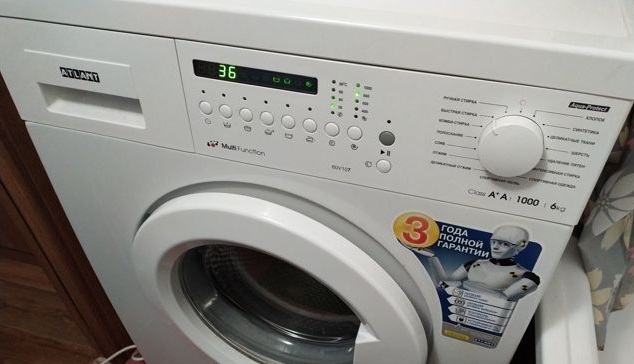
- the pump is clogged with a foreign object;
- dirty drain filter;
- broken pump;
- clogged siphon or general sewer;
- clogged drain hose.
To more accurately determine the nature of the breakdown, it is necessary to sequentially check all the key “points” of the drainage system. Where to start and what is needed for repairs - we will tell you in detail further.
Has the filter been cleaned recently?
If the drain does not work on Atlanta or any other washing machine, then first of all you need to check the drainage filter. This is a plastic spiral nozzle that protects the pump, volute and impeller from objects and debris accidentally falling into the tank. When there is too much stuck debris, drainage becomes difficult and the drum remains full. To correct the situation, it is necessary to clean the “spiral”.
Cleaning the garbage filter is a simple task that can be done by any washing machine user. You just need to follow the following instructions:
- disconnect the machine from communications;
- move 7-10 cm away from the wall;
- tilt the washer back so that the front legs rise up 5-6 cm;
- find the technical hatch in the lower right corner of the hull;

- carefully pry off the hatch with a screwdriver and, unclamping the plastic holders, remove it;
- find the black round cap - the garbage filter plug;
- place a container under the cork to collect water, and cover the surrounding area with rags;
- grab the protruding handle and unscrew the filter clockwise;
- pull out the filter and collect the water.
Do not wash the filter in hot water - the plastic is deformed at high temperatures!
Logic will tell you what to do next. We take a dish sponge or rag and thoroughly clean the seat freed from the filter, removing a layer of scale and dirt. Then we get to work on the nozzle itself, which should be rinsed under the tap and, if necessary, treated with soap and a toothbrush.If there is too much stuck debris, then you should soak the “plastic” for 20-40 minutes in a solution of warm water and citric acid. It is forbidden to lower the spiral into boiling water - the material is deformed at high temperatures.
Main drain pipe
Statistics say that drainage is most often difficult due to a clogged main drain pipe. It is not difficult to detect - just look inside the washer through the bottom. If the washing machine does not have a bottom panel, then you can see the hose only by placing the machine on its side. If you have a special pallet, you will first have to remove this obstacle by unscrewing several retaining screws.
As a rule, this pipe must be connected to three components: a tank, a pump and a pressure regulation hose. Therefore, to dismantle the sleeve you will have to loosen the clamp at all indicated points. Afterwards all that remains is to move the element to the side, remove it from the washing machine and inspect it.
You should not try to repair hoses with your own hands by sealing cracks - this is fraught with repeated rupture and leaks!
If the pipe is intact and relatively clean, then it is enough to go over it with a special brush and rinse it under the tap. In slightly advanced cases, it is better to soak the part for 2-3 hours in a solution of citric acid, using 2 liters of water per 100 grams of lemon juice. In case of severe contamination, damage or “impenetrable” blockage, you will have to replace the hose with a new one. It’s not difficult to select a replacement yourself if you give the serial number of the machine or bring a removed sample to the store.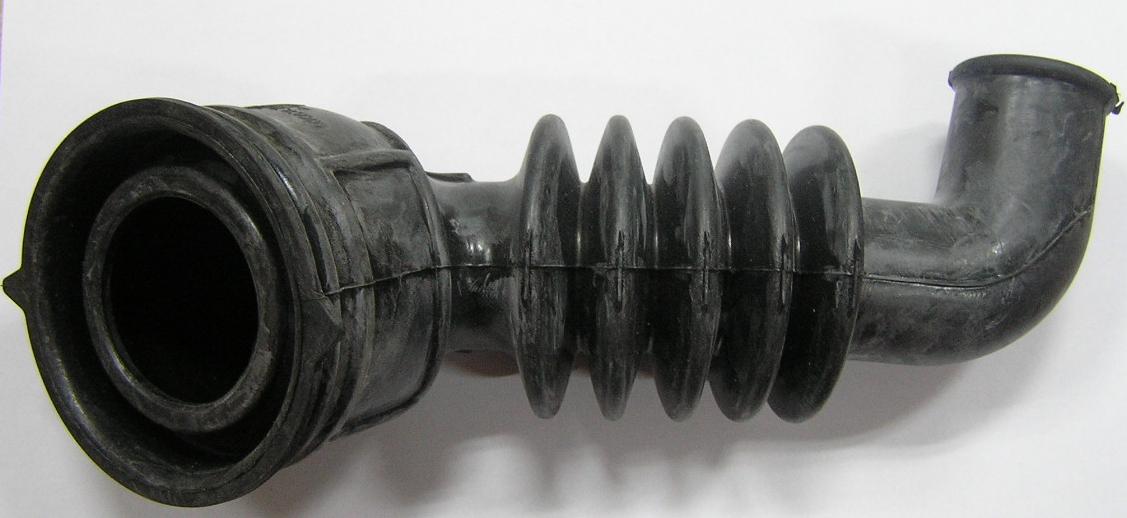
Sewage pump
If everything is in order with the garbage filter and pipe, then a more serious problem has occurred.We suspect the impeller and pump may be broken, blocked or clogged. You will have to look under the bottom of the machine again and diagnose both parts.
First, we look at the impeller - a wheel with blades located immediately behind the debris filter. The problem is that any foreign object, such as keys, a coin or a rivet, that accidentally gets into the drain system can jam the rotating element and lead to breakdown. Therefore, we get to the “propeller” and try to spin it. If the rotation is too free, the fastener should be tightened; If it’s difficult, remove the blocking item, the tangled hair, or the stuck “lost item.”
Is the impeller ok? Then we pay attention to the pump, or rather, we check its electronics for functionality.
- Remove the garbage filter.
- Set the “Spin” mode.
- We shine a light into the hole freed from the filter and evaluate the behavior of the impeller (if it is motionless, it means the pump is broken).
There is no point in trying to fix the pump yourself. Firstly, most pumps are not repairable. Secondly, it is much easier and more reliable to buy an analogue, which is inexpensive. There will be no problems finding a suitable part: Atlant washing machines are equipped with standard spare parts, so just look at the nearest household appliances store or construction market. As a last resort, we contact the manufacturer or online store. We focus on the serial number indicated on the drainage housing.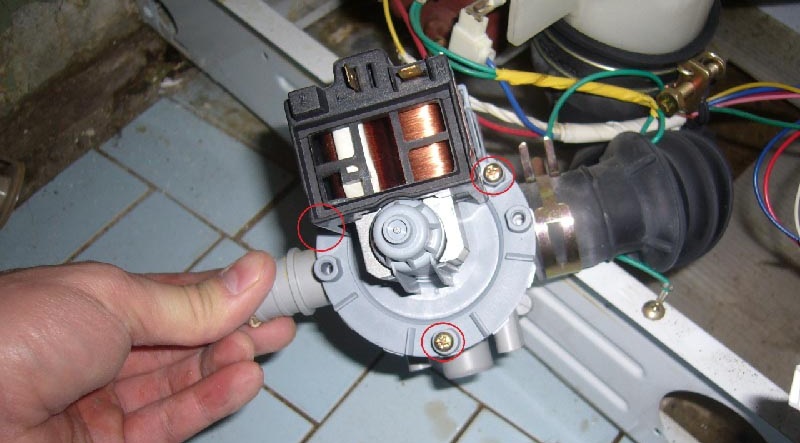
The old pump is dismantled through the bottom. First, the supplied wires and pipes are disconnected, then the impeller is detached. Then the holding bolt is unscrewed, and then the pump is removed from the volute.When replacing, we proceed in the same way, only in reverse order: fix it in place and make contacts. If replacing the pump does not help, then the problem is with the board. You can’t handle this on your own – you need to turn to the experts.
Interesting:
Reader comments
- Share your opinion - leave a comment
Categories
Washing machine repair


For buyers

For users

Dishwasher


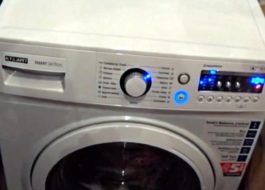

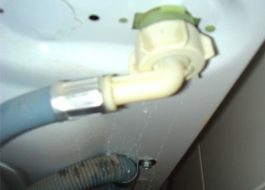
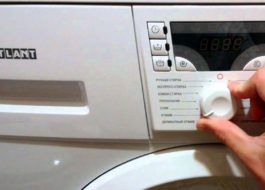
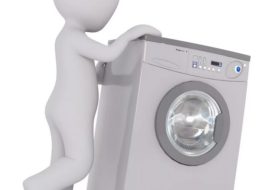










Add a comment